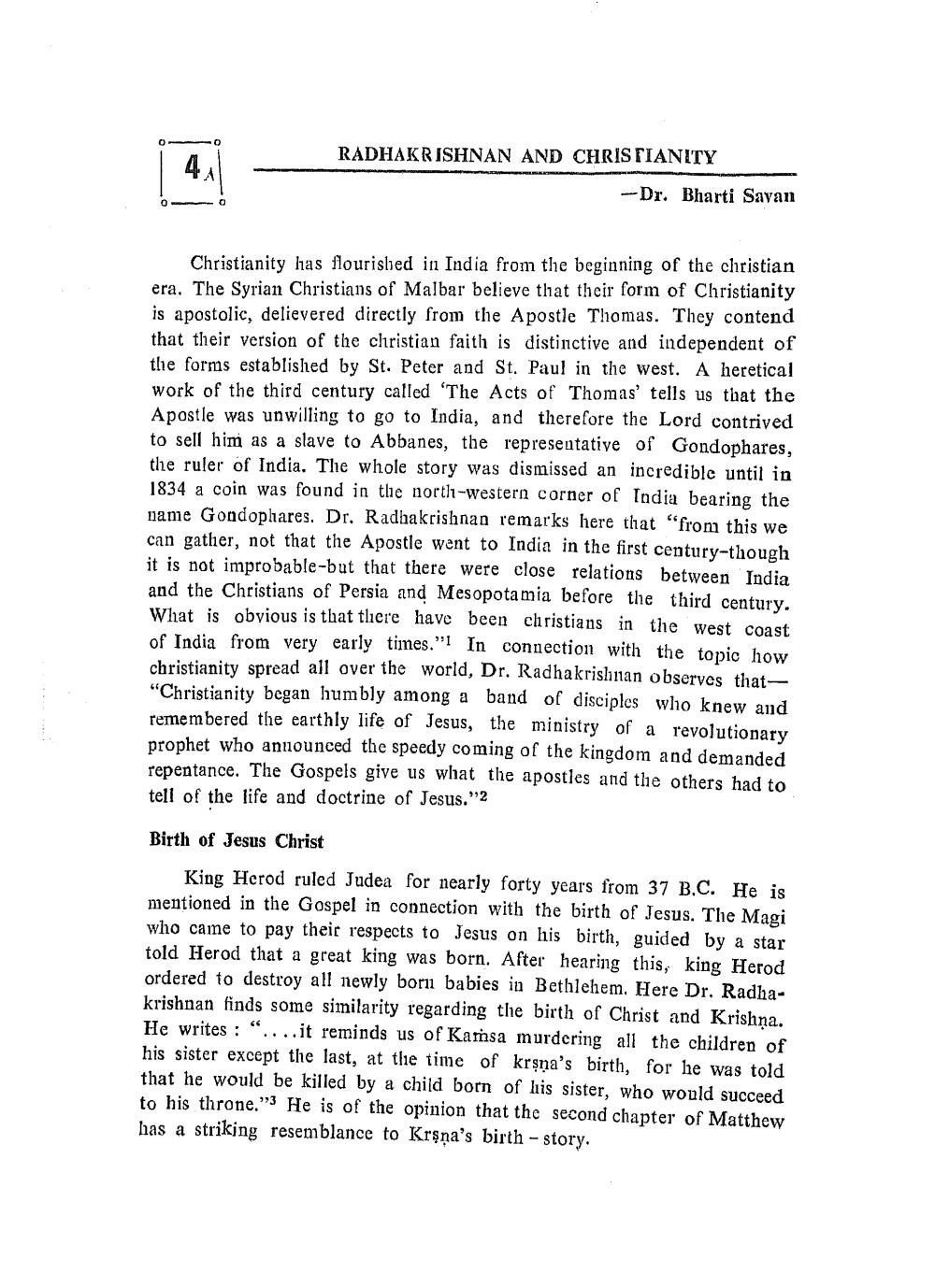________________
RADHAKRISHNAN AND CHRISTIANITY
-Dr. Bharti Sayan
OO
Christianity has flourished in India from the beginning of the christian era. The Syrian Christians of Malbar believe that their form of Christianity is apostolic, delievered directly from the Apostle Thomas. They contend that their version of the christian faith is distinctive and independent of the forms established by St. Peter and St. Paul in the west. A heretical work of the third century called 'The Acts of Thomas' tells us that the Apostle was unwilling to go to India, and therefore the Lord contrived to sell him as a slave to Abbanes, the representative of Gondophares, the ruler of India. The whole story was dismissed an incredible until in 1834 a coin was found in the north-western corner of India bearing the name Gondoplares. Dr. Radhakrishnan remarks here that "from this we can gather, not that the Apostle went to India in the first century-though it is not improbable-but that there were close relations between India and the Christians of Persia and Mesopotamia before the third century. What is obvious is that tliere have been christians in the west coast of India from very early times."! In connection with the topic how christianity spread all over the world, Dr. Radhakrishnan observes that "Christianity began humbly among a band of disciples who knew and remembered the earthly life of Jesus, the ministry of a revolutionary prophet who announced the speedy coming of the kingdom and demanded repentance. The Gospels give us what the apostles and the others had to tell of the life and doctrine of Jesus."2
ious is that the lines."
In
padhakrishnan
Birth of Jesus Christ
King Herod ruled Judea for nearly forty years from 37 B.C. He is mentioned in the Gospel in connection with the birth of Jesus. The Magi who came to pay their respects to Jesus on his birth, guided by a star told Herod that a great king was born. After hearing this, king Herod ordered to destroy all newly born babies in Bethlehem. Here Dr. Radhakrishnan finds some similarity regarding the birth of Christ and Krishna. He writes : “....it reminds us of Kamsa murdering all the children of his sister except the last, at the time of krşna's birth, for he was told that he would be killed by a child born of his sister, who would succeed to his throne." He is of the opinion that the second chapter of Matthew has a striking resemblance to Krşņa's birth - story.




